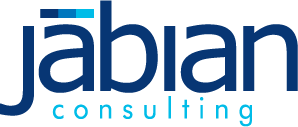On a recent business call, my colleagues and I introduced ourselves and shared a quick comment as to what our biggest “positive” outcome has been through spending time at home under quarantine in response to the novel Corona virus. The group was polarized. Those who identified as “introverts” found the shelter in place exercise to be incredibly fruitful – an environment that met their personal and professional needs. “Extroverts”, however, had grown increasingly frustrated and desired a return to “normal” for in-person interaction and increased socialization.
“Studies show that about 40 percent of people’s daily activities are performed each day in almost the same situations” (1). When the activities we perform each day are forced into transition, it gives us the opportunity to reflect and determine what we should inherently change. Recognizing that remote work can be effective for companies and that many individuals appreciate the ability to work in remote environments (introverts), while others might appreciate the ability to fit more into their day without long commutes and gaps in schedules (extroverts), opens the door for a shift in the way we accommodate unique work styles. How do we enhance the same repetitive situations (reflective of 40 percent of our daily activities), so they accommodate our best ways of working, increasing our productivity and job satisfaction?
Companies can engage their workforce in remote environments now, to study and analyze their employee base and inform decisions for future cultural and workplace enhancements. Workplace policies, team structure and interaction, technology, and operations can all be revisited to reflect employee wants and needs through measuring:
- Desire for flexibility across work hours, location, and team engagement versus individual contribution (e.g., cross-functional team interaction and in-person collaboration)
- Need for balance between family/personal life and professional life (e.g., balancing children at home with flexible delivery deadlines)
- Effectiveness of virtual interactions with colleagues (e.g., virtual happy hours and benefits such as online workouts)
Investigating what the new “normal” will be and incorporating lessons learned during our time of shelter in place, provides an opportunity for companies to better understand how to engage employees in the future. Reflecting and studying this period of change will influence not only how subsequent crisis situations will be handled but will also be incorporated into the new day-to-day to better suit employee needs for increased workplace fulfillment and retention. Listening to employees today, as the global economy pushes to get back on track sooner rather than late, will capitalize on a transitional point in our businesses that should not be lost as we so revert back to old, potentially less-effective policies and habits.
Looking to analyze and engage your workforce at a deeper level? Jabian can help: Plan Ahead
Source: (1) – https://www.sciencedaily.com/releases/2014/08/140808111931.htm
